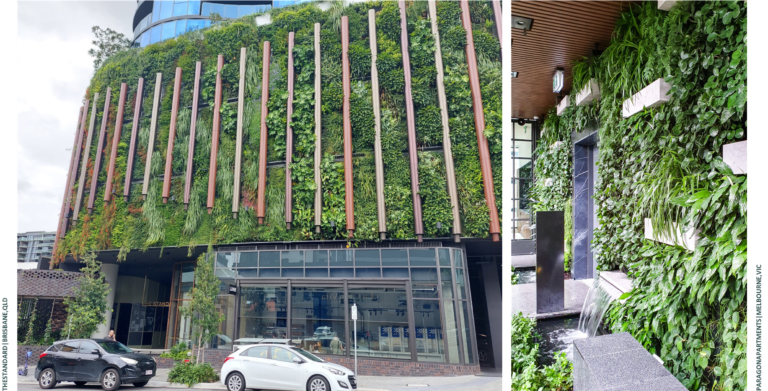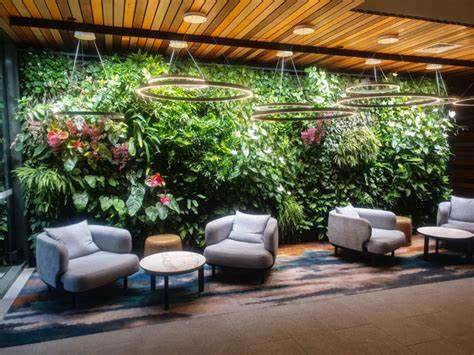
Vertical Gardens: Promoting Biodiversity Conservation through Innovative Design
Introduction
Vertical gardens have gained immense popularity in recent years as innovative solutions for maximizing green spaces in urban environments. These living walls not only add aesthetic appeal to concrete jungles but also play a crucial role in biodiversity conservation. This article delves into the relevance of vertical gardens in promoting biodiversity, discussing their potential benefits and importance.
Historical Background
Originating from ancient civilizations, vertical gardens have evolved significantly over time. The concept of vertical gardens can be traced back to the Hanging Gardens of Babylon, one of the Seven Wonders of the Ancient World. Notable developments in the use of vertical gardens for biodiversity conservation include the pioneering efforts of Patrick Blanc, a French botanist renowned for creating vertical landscapes.
Key Concepts and Definitions
Vertical gardens are living systems where plants grow on vertical surfaces, utilizing specialized techniques such as hydroponics or modular panels. Biodiversity conservation refers to the protection and preservation of ecosystems, species, and genetic diversity. Important terms to understand in this context include ecosystem services, habitat restoration, and species diversity, which contribute to the overall understanding of vertical gardens’ impact on biodiversity.

Main Discussion Points
Vertical Gardens as Habitat for Wildlife
Vertical gardens provide essential habitat and refuge for various species, including birds, insects, and even small mammals. These green walls offer a safe haven in urban environments, supporting biodiversity by creating microhabitats and promoting ecological connectivity.
Vertical Gardens as Green Infrastructure
By acting as green corridors, vertical gardens contribute to the creation of interconnected habitats in urban settings. They enhance the resilience of urban ecosystems, providing vital resources and promoting the movement of species. This green infrastructure plays a significant role in biodiversity conservation efforts.
Vertical Gardens as Educational Tools
Vertical gardens serve as powerful educational resources, raising awareness about biodiversity conservation. They provide opportunities for hands-on learning, engaging individuals in understanding the importance of preserving and enhancing urban biodiversity. Additionally, vertical gardens can foster citizen science and community involvement in conservation efforts.
Case Studies or Examples
Real-world examples of successful vertical gardens that have contributed to biodiversity conservation include the Bosco Verticale in Milan, Italy, and the One Central Park in Sydney, Australia. These projects demonstrate the positive impact of vertical gardens on local biodiversity, showcasing the potential for sustainable and ecologically friendly urban design.

Current Trends or Developments
Recent trends in the adoption and implementation of vertical gardens for biodiversity conservation include the integration of innovative technologies. Advancements in irrigation systems, lighting, and plant selection are making vertical gardens more sustainable and efficient. Research findings are also shedding light on the multiple benefits of vertical gardens for urban ecosystems.
Challenges or Controversies
While vertical gardens offer numerous benefits, they also face challenges and limitations. Maintenance requirements, such as irrigation and monitoring, can be demanding. The cost of installation and maintenance may also pose barriers for widespread adoption. Additionally, some experts question the long-term ecological impact and argue for a more holistic approach to biodiversity conservation.
Future Outlook
The future of vertical gardens looks promising, with advancements in technology and design on the horizon. Innovations such as modular systems and automated maintenance tools will make vertical gardens more accessible and efficient. The integration of vertical gardens in urban planning and development will become increasingly common, ensuring the preservation and enhancement of biodiversity in cities.

Conclusion
Vertical gardens offer a unique and effective approach to promoting biodiversity conservation in urban areas. They provide habitat for wildlife, serve as green infrastructure, and act as educational tools for raising awareness. Despite challenges and controversies, the continued implementation and research of vertical gardens are crucial for the sustainable development of cities and the preservation of biodiversity.
References
Blanc, P. (2008). The Vertical Garden: From Nature to the City. W.W. Norton & Company.
Oberndorfer, E., Lundholm, J., Bass, B., Coffman, R. R., Doshi, H., Dunnett, N., … & Rowe, B. (2007). Green roofs as urban ecosystems: ecological structures, functions, and services. BioScience, 57(10), 823-833.
Piqué, M., & Rieradevall, J. (2015). Green walls: a review of their functions in a sustainable urban environment. Renewable and Sustainable Energy Reviews, 52, 596-607.
Tallamy, D. W., & Shropshire, K. J. (2009). Ranking lepidopteran use of native versus introduced plants. Conservation Biology, 23(4), 941-947.




